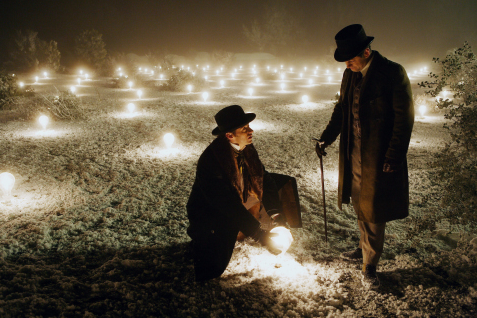“Quality” Experiment
Introduction
Quality is about the intensity of the illumination. There are generally two ways of describing the quality of light “hard” and “soft” although most situations fall between the two.
Definitions
“Hard” – direct light creating bold shadows, crisp textures and edges.
“Soft” – Indirect or diffused which blurs contours and textures, softer contrast between light and shade.
“Flag” – A piece of flat wood, cardboard or other material used to shield the camera lens from unwanted light sources.
Hypothesis (What do you want to find out?)
How can you manipulate your lighting set up to achieve variations on “quality” within your lighting designs?
1) Allocate roles to each person within the group:
· Director – Coordinates the group to achieve the experiment.
· Camera – Set up and position the camera, and record evidence.
· Clapper – Writes “boards” to notify the audience what they are watching. Also helps Recorder.
· Recorder – Notes down the experiments variables and monitors decisions and revisions made.
· Gaffer – Positioning of light and equipment.
· Character in the scene.
2) Rig and examine the equipment you have been given, (positioning of equipment must be noted/sketched by “recorder”.
List of equipment you have been supplied with:
o Mini DV Camera
o Tripod
o Batteries
o Base plate
o Tape
o Laminated whiteboards & marker pens
o 1 x Lowel Pro 250W lamp
o 1 x stand
o Chimera & diffusion attachments.
o Speed ring.
o Black card
o Black sugar paper
o Scissors
o Safety gloves
o Extension lead.
3) As a group review the pictures provided and have a short discussion identifying the concept of “quality” of light within them.
4) As a group, and written down by the Recorder, make your predictions on what the equipment will do to the quality of the light.
5) Identify the factors that need to change.
6) Identify how you will record the effects while remaining safe.
7) Identify what will stay the same.
8) GO FOR IT….
“Direction” Experiment
Introduction
Every light has a point where it is brightest, and a point to which it wanders to lose itself completely.
Consider the directions that the light can come from: Front; Side; Back; Under; Top. And how you can bounce light off of different surfaces.
Hypothesis (What do you want to find out?)
How can you manipulate your lighting set up to achieve variations on “direction” within your lighting designs?
1) Allocate roles to each person within the group:
· Director – Coordinates the group to achieve the experiment.
· Camera – Set up and position the camera, and record evidence.
· Clapper – Writes “boards” to notify the audience what they are watching. Also helps Recorder.
· Recorder – Notes down the experiments variables and monitors decisions and revisions made.
· Gaffer – Positioning of light and equipment.
2) Rig and examine the equipment you have been given, (positioning of equipment must be noted/sketched by “recorder”.
List of equipment you have been supplied with:
o Mini DV Camera
o Tripod
o Batteries
o Base plate
o Tape
o Laminated whiteboards & marker pens
o 1 x Lowel Pro 250W lamp
o 1 x stand
o Extension Lead
o Barn Doors
o Torch
o Candle plus bucket of water, plate, matches / lighter.
o Black wrap and crock clips
o White material & tin foil
o Safety gloves
3) As a group review the pictures provided and have a short discussion identifying the concept of “direction” of light within them.
4) As a group, and written down by the Recorder make your predictions on what the equipment will do to the quality of the light.
5) Identify the factors that need to change.
6) Identify how will you measure and record the effects while remaining safe.
7) Identify what will stay the same.
8) GO FOR IT….




 1. Analyse the conventions of film posters using at least 2 examples, (think Hollywood vs. British with a spin on Independent if you're feeling brave enough!)
1. Analyse the conventions of film posters using at least 2 examples, (think Hollywood vs. British with a spin on Independent if you're feeling brave enough!) 
 So this workshop is all about "source" and "colour", the remaining two features of lighting, as described by Bordwell & Thompson in their book Film Art.
So this workshop is all about "source" and "colour", the remaining two features of lighting, as described by Bordwell & Thompson in their book Film Art. So this post is where you illustrate your understanding of two of the major features of lighting "quality" and "direction". You should be starting to show some independence in the way that you present your blog so I've detailed below the minimum I want to see on the post:
So this post is where you illustrate your understanding of two of the major features of lighting "quality" and "direction". You should be starting to show some independence in the way that you present your blog so I've detailed below the minimum I want to see on the post: